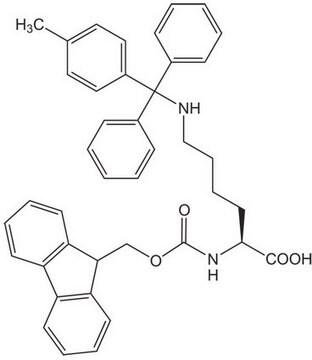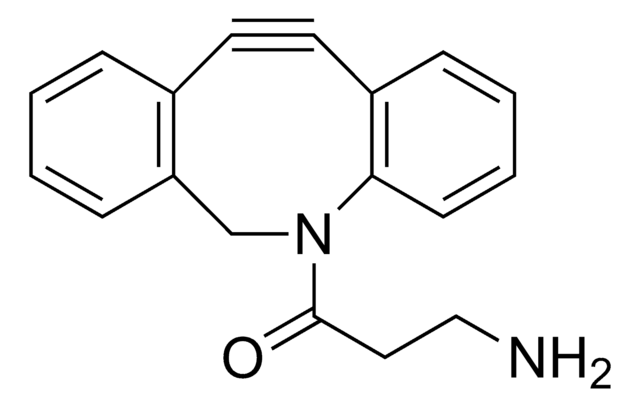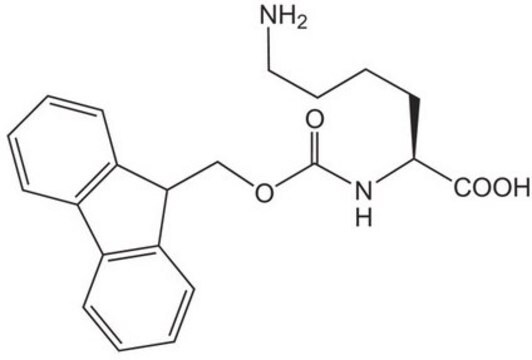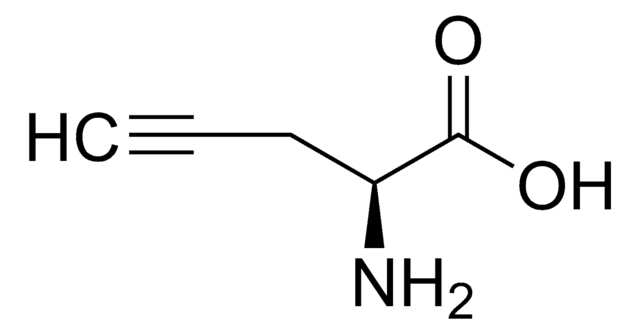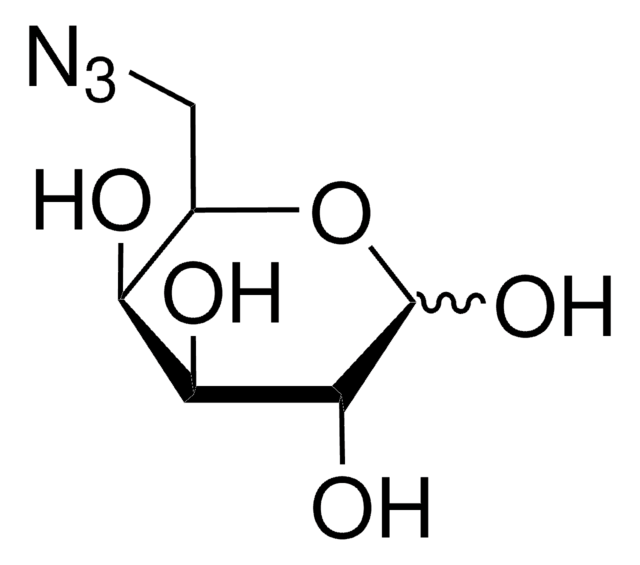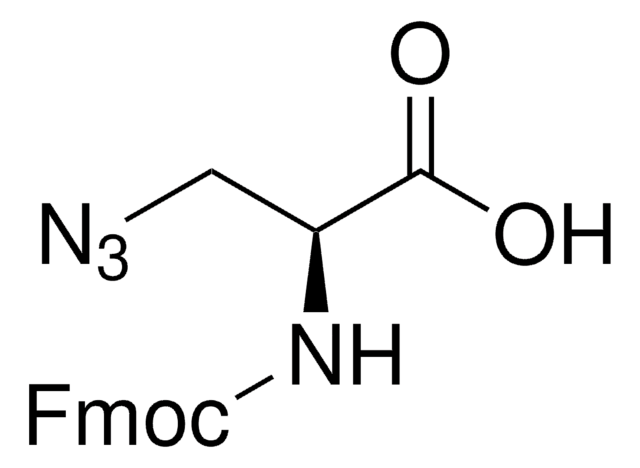914088
N6-((2-Azidoethoxy)carbonyl)-L-lysine hydrochloride
≥95%
Sinónimos:
(S)-2-amino-6-((2-azidoethoxy)carbonylamino)hexanoic acid hydrochloride, Clickable amino acid for bioconjugation, H-L-Lys(EO-N3)-OH HCl, Lysine-azide, UAA crosslinker
About This Item
Productos recomendados
Nivel de calidad
Ensayo
≥95%
Formulario
powder
temp. de almacenamiento
−20°C
cadena SMILES
[N+](=[N-])=NCCOC(=O)NCCCC[C@H](N)C(=O)O.C
InChI
1S/C9H17N5O4.CH4/c10-7(8(15)16)3-1-2-4-12-9(17)18-6-5-13-14-11;/h7H,1-6,10H2,(H,12,17)(H,15,16);1H4/t7-;/m0./s1
Clave InChI
LQERWAMRZNEGIE-FJXQXJEOSA-N
Aplicación
Otras notas
Semisynthesis of an Active Enzyme by Quantitative Click Ligation
A Robust and Quantitative Reporter System To Evaluate Noncanonical Amino Acid Incorporation in Yeast
An orthogonalized platform for genetic code expansion in both bacteria and eukaryotes
Producto relacionado
Palabra de señalización
Danger
Frases de peligro
Consejos de prudencia
Clasificaciones de peligro
Self-react. C
Código de clase de almacenamiento
5.2 - Organic peroxides and self-reacting hazardous materials
Clase de riesgo para el agua (WGK)
WGK 3
Punto de inflamabilidad (°F)
Not applicable
Punto de inflamabilidad (°C)
Not applicable
Elija entre una de las versiones más recientes:
Certificados de análisis (COA)
It looks like we've run into a problem, but you can still download Certificates of Analysis from our Documentos section.
Si necesita más asistencia, póngase en contacto con Atención al cliente
¿Ya tiene este producto?
Encuentre la documentación para los productos que ha comprado recientemente en la Biblioteca de documentos.
Nuestro equipo de científicos tiene experiencia en todas las áreas de investigación: Ciencias de la vida, Ciencia de los materiales, Síntesis química, Cromatografía, Analítica y muchas otras.
Póngase en contacto con el Servicio técnico


